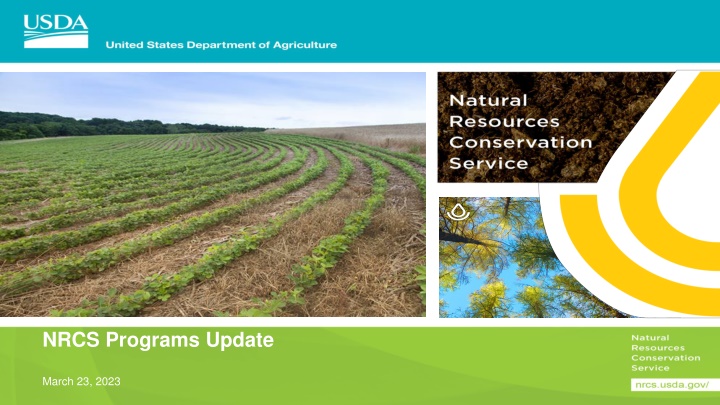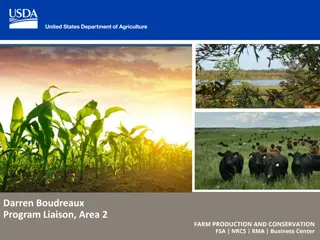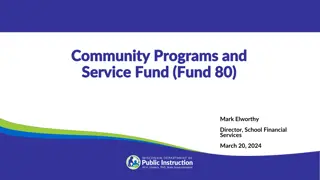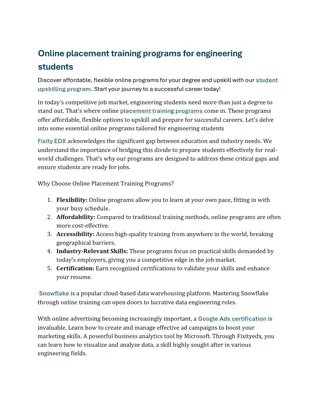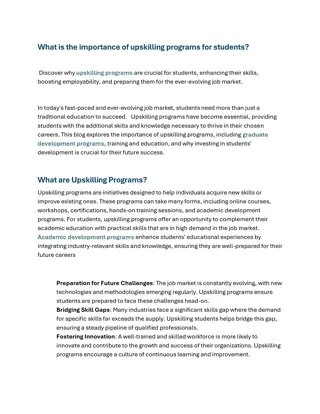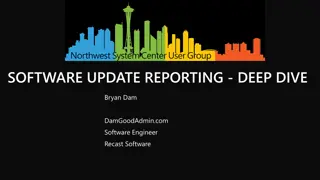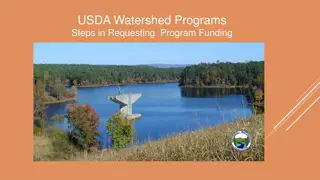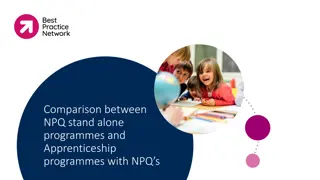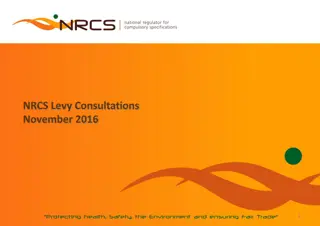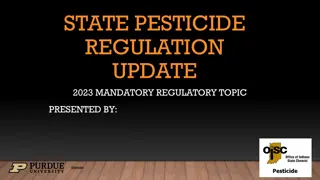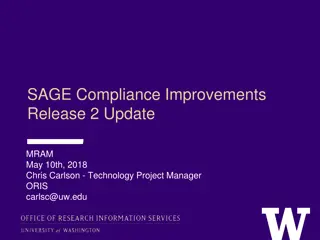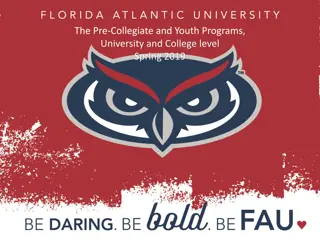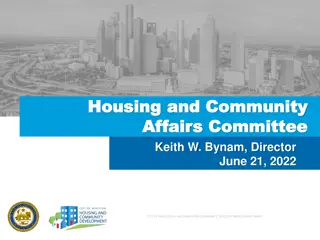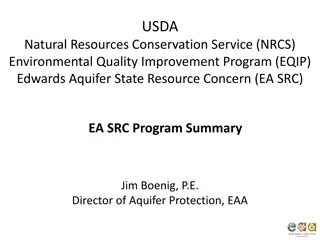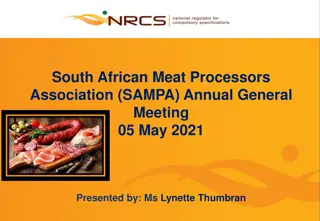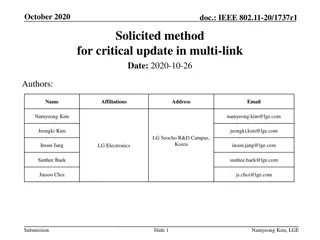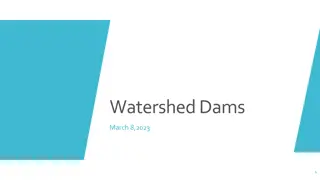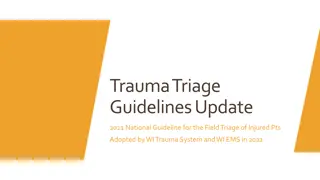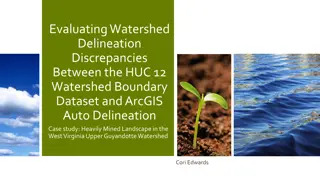NRCS Programs Update
The Inflation Reduction Act (IRA) provides $20 billion to support USDA's conservation programs focusing on climate-related benefits and agricultural resilience. It allocates funds for programs like the Environmental Quality Incentives Program, Agricultural Conservation Easement Program, Regional Conservation Partnership Program, and Conservation Stewardship Program. Additionally, the IRA emphasizes practices to reduce emissions and enhance soil health, such as soil carbon sequestration, nitrogen management, livestock waste management, grazing land management, agroforestry, and rice production. The IRA funding forecast for Oregon includes financial assistance for various programs up to FY26. These initiatives aim to mitigate climate change impacts and promote sustainable agriculture and forestry practices.
Download Presentation

Please find below an Image/Link to download the presentation.
The content on the website is provided AS IS for your information and personal use only. It may not be sold, licensed, or shared on other websites without obtaining consent from the author.If you encounter any issues during the download, it is possible that the publisher has removed the file from their server.
You are allowed to download the files provided on this website for personal or commercial use, subject to the condition that they are used lawfully. All files are the property of their respective owners.
The content on the website is provided AS IS for your information and personal use only. It may not be sold, licensed, or shared on other websites without obtaining consent from the author.
E N D
Presentation Transcript
NRCS Programs Update March 23, 2023
Inflation Reduction Act (IRA) No IRA funds will be disbursed after 9/30/2031 Provides $20 billion to support USDA s conservation programs that yield climate-related benefits while building resilience in agricultural operations. (For practices, enhancements and activities that improve soil carbon, reduce nitrogen losses, or reduce, capture, avoid, or sequester CO2, methane, or NOx emissions associated with ag. production) $1.4 billion for the Agricultural Conservation Easement Program (for easements or interests in land that will most reduce, capture, avoid, or sequester CO2, methane or NOx emissions associated with land eligible for the program) FY23- $100 million (EPD said most of this FY s $ would be pushed to FY24) FY24- $200 million FY25- $500 million FY26- $600 million $8.45 billion for the Environmental Quality Incentives Program FY23- $250 million FY24- $1.75 billion FY25- $3.0 billion FY26- $3.45 billion $4.95 billion for the Regional Conservation Partnership Program (shall prioritize partnership agreements that support the implementation of conservation projects that assist ) FY23- $250 million FY24- $800 million FY25- $1.5 billion FY26- $2.4 billion $3.25 billion for the Conservation Stewardship Program FY23- $250 million FY24- $500 million FY25- $1.0 billion FY26- $1.5 billion $1 billion for conservation technical assistance sequestration and greenhouse gas emission reductions from conservation investments $300 million to measure, evaluate, quantify carbon IRA Law _ https://www.congress.gov/117/plaws/publ169/PLAW- 117publ169.pdf 2
Oregon-Inflation Reduction Act (IRA) Forecast IRA funding is in addition to OR s regular FB funding Financial Assistance funds dispersed to states FY23-FY26 Funds will be expended by 9/30/2031 Environmental Quality Incentives Program- Financial Assistance FY23- $2.1 million FY24- $13 million FY25- $23 million FY26- $26 million Agricultural Conservation Easement Program (for easements or interests in land that will most reduce, capture, avoid, or sequester CO2, methane or NOx emissions associated with land eligible for the program) FY23- $0 FY24- $0 FY25- $6.7 million FY26- $8 million Conservation Stewardship Program- Financial Assistance FY23- $4.8 million FY24- $7.5 million FY25- $15.2 million FY26- $23 million 3
IRA uses Climate- Smart Agriculture and Forestry (CSAF) Mitigation Activities NRCS climate-smart agriculture and forestry mitigation practices are divided into mitigation categories and delivered through NRCS programs such as EQIP and CSP Soil Health Reducing emissions and enhancing soil carbon sequestration. Nitrogen Management Implementing the 4Rs of nitrogen management and reducing nitrous oxide, a potent greenhouse gas. The 4Rs are Right Source, Right Rate, Right Time and Right Place. Livestock Waste Management Reducing potent methane emissions from manure. Grazing Land Management Reducing emissions and building soil carbon stocks in grazing systems. Agroforestry, Forestry and Upland Wildlife Habitat Building carbon stocks in perennial biomass and soils. Restoration of Disturbed Lands Improving the quality of previously mined or degraded lands to increase soil and perennial biomass carbon stocks. Rice Production Reducing methane emissions from rice fields by minimizing methane production during the growing season. https://www.nrcs.usda.gov/conservation-basics/natural-resource-concerns/climate/climate-smart-mitigation- activities 4
IRA supported Climate Smart Agriculture and Forestry (CSAF) The full CSAF list can be viewed here: https://www.nrcs.usda.gov/conservation- basics/natural-resource-concerns/climate/climate- smart-mitigation-activities 5 5
Agricultural Conservation Easement Program (ACEP)
ACEP Components Agricultural Land Easements (ACEP-ALE) NRCS provides cost-share assistance to eligible entities for the purchase of agricultural land easements on eligible land from eligible landowners. Entity holds the easement. Purpose of ALE Protect the agricultural use, viability and related conservation values of eligible land by limiting non-agricultural uses. Protect grazing uses and related conservation values by restoring and conserving eligible land. 7
ACEP Components Wetland Reserve Easements (ACEP-WRE) NRCS purchases easements directly from eligible landowners through a reserved interest deed on eligible land to restore, protect, and enhance wetlands and associated habitats. NRCS holds the easement. Purpose of WRE Restore, protect, and enhance wetlands on eligible land while maximizing wetland wildlife habitat. 8
FY 2023 IRA ACEP-WRE Prioritization FY24- Developing state strategy to compete for national IRA ACEP ALE/WRE funding 11
ACEP-ALE Update Successful partnership with Oregon Watershed Enhancement Board (OWEB) through Oregon Agricultural Heritage Program (OAHP) Can provide match funding for ACEP-ALE through annual application process Fiscal Year FY22 FY23 Application # 9 4 Agreement # 8 3 Obligation $7,300,000 $1,780,143 Fiscal Year FY24 Application # 10 Forecasted Need $5,800,000 12
ACEP-WRE Future Sub-Committee Requests FY24 Geographic Area Rate Cap (GARC) review (85% of FMV for FY23) WRE Ranking Updates Wetlands Restoration Conservation Guide (WRCG) Input and Review WRE advertisement, outreach, success stories Contact Cory Owens or Erin Kaczmarczyk for updates to OTAC Easement or WLFW sub-committee member updates 13
USDA Non-Discrimination Statement In accordance with Federal civil rights law and U.S. Department of Agriculture (USDA) civil rights regulations and policies, the USDA, its Agencies, offices, and employees, and institutions participating in or administering USDA programs are prohibited from discriminating based on race, color, national origin, religion, sex, gender identity (including gender expression), sexual orientation, disability, age, marital status, family/parental status, income derived from a public assistance program, political beliefs, or reprisal or retaliation for prior civil rights activity, in any program or activity conducted or funded by USDA (not all bases apply to all programs). Remedies and complaint filing deadlines vary by program or incident. Persons with disabilities who require alternative means of communication for program information (e.g., Braille, large print, audiotape, American Sign Language, etc.) should contact the responsible Agency or USDA's TARGET Center at (202) 720-2600 (voice and TTY) or contact USDA through the Federal Relay Service at (800) 877-8339. Additionally, program information may be made available in languages other than English. To file a program discrimination complaint, complete the USDA Program Discrimination Complaint Form, AD-3027, found online at How to File a Program Discrimination Complaint and at any USDA office or write a letter addressed to USDA and provide in the letter all of the information requested in the form. To request a copy of the complaint form, call (866) 632-9992. Submit your completed form or letter to USDA by: (1) mail: U.S. Department of Agriculture, Office of the Assistant Secretary for Civil Rights, 1400 Independence Avenue, SW, Washington, D.C. 20250-9410; (2) fax: (202) 690-7442; or (3) email: program.intake@usda.gov. 14
